#South American birds
Text

Long-tailed sylph (Aglaiocercus kingii)
Photo by Fernando Burgalin Sequeria
#Aglaiocercus kingii#Aglaiocercus#long-tailed sylph#sylph#hummingbird#lesbiini#lesbiinae#south american birds#birds#blue#green#blue birds#green birds#tropical birds#nature#animals#wildlife#blue and green
2K notes
·
View notes
Text
Horned Screamer (Anhima cornuta)

"The fact that the universe saw fit to let this thing exist"
"horn, prominent spurs on wings, "The most peculiar feature of the screamers is a skin filled with small bubbles of air about a quarter of an inch thick, which produce a crackling sound when pressed; the function of this layer of air bubbles is unknown.""
Hey these guys are ducks! No I'm not lying- they're ducks! They belong to the same order as ducks, geese, and swans! What the fuck!
While my surface level digging did not confirm this, my thought is that screamers represent a branch in anseriformes where the ducks had recently split from gamebirds in galliformes, but hadnt yet specialized to have their spatulate bills. I'm not a source to quote on this though, as the paleontological record is a bit hazy for screamers.
For some actual facts: their horn is not a modified feather or something adjacent, but is "a cornified structure loosely attached to the skull, which frequently breaks off at the tip." They eat water plants but only have partially webbed feet. They have wing spurs. Despite being 8lb (3.5kg) birds, they nest on floating vegetation. What the heck is going on with these guys??
Sources:
Image Source: eBird (Bradley Hacke)
109 notes
·
View notes
Text
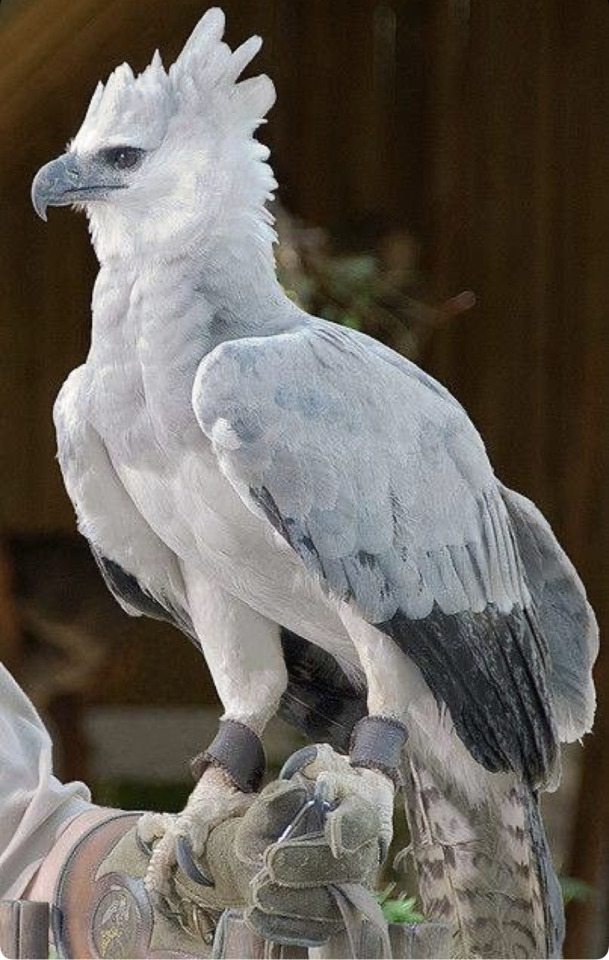
Harpy Eagle
Source: VBC LSSA on Flickr
One of the world’s largest & most powerful birds of prey living in the tropical rainforests of Central & South America.
66 notes
·
View notes
Text
BOTD: Bananaquit

Photo: Doug Greenberg
"Fond of nectar, this little bird often creeps about in flowering trees, probing the blossoms. It is widespread in the American tropics and especially numerous in the West Indies, including the Bahamas. Strays from the Bahamas have turned up a number of times in southern Florida, mainly in winter."
- Audubon Field Guide
#birds#north american birds#bananaquit#south american birds#tanager#tanagers#birds of america#american birds#bird#bird watching#birdblr#birblr#passerines#birds of mexico#birds of central america#birds of the caribbean#Coereba flaveola
45 notes
·
View notes
Video
ARACARI HELPERS. PALE-MANDIBLED ARAÇARI Pteroglossus erythropygius Near Nest in Mindo in Northwestern Ecuador. por Peter W. Wendelken
Via Flickr:
PALE MANDIBLED ARAÇARI Pteroglossus erythropygius. Two adult Pale-mandibled Araçaris are perched 30 meters or so away from a nest hole at 10:51 AM on August 20, 2019. We believe that these two birds are helpers. The bird on the left is preening its right wing. Species that are cooperative breeders have adult offspring from a previous clutch of eggs that act as helpers in that they help their parents to raise their siblings. The helpers bring food to the nest and may also help to guard it from predators. The new, active nest hole of the helper's parents is located in a large tree on a mountainside just south of Mindo in northwestern Ecuador. At this nest we could hear what sounded like multiple young in the nest but the adults feeding them inserted their heads almost completely into the nest cavity to give the young food indicating that the young at this date were still relatively small. At one point we sighted three adults simultaneously, each with food in its bill, waiting to deliver the food to the young. And four adults were seen at one time either with food in their bill or perched within 30 meters or so of the nest hole. Food delivered included fruit and insects. The Pale-mandibled Araçari belongs to the family Ramphastidae and is found in western Ecuador and Perú. It is considered by some workers to be a subspecies of the COLLARED ARAÇARI Pteroglossus torquatus erythropygius. Unos ayudantes del Arasari Piquipálido Pteroglossus erythropygius están perchados cerca del nuevo nido de sus padres en un árbol grande en la faldas de una montaña al sur de Mindo en el noroccidente de Ecuador a las 10 y 51 de la mañana el 20 de agosto de 2019. For OPTIMAL DETAILED VIEWING of these helper Pale-mandibled Araçaris near the nest, VIEW THE COLOSSAL SIZE (3012 x 2000) using this direct Flickr link: www.flickr.com/photos/neotropical_birds_mayan_ruins/53199...
#Pale-mandibled Araçari#Pale-mandibled Araçari Helpers#Pale-mandibled Araçari Nest#Collared Aracari#Pale-mandibled Araçari in Ecuador#Araçari#Aracari#Toucan#Arasari Piquipálido#Arasari#Tucán#Pteroglossus erythropygius#Pteroglossus torquatus#Pteroglossus#Ramphastidae#Ecuador Birds#South American Birds#Ecuador Toucans#South American Toucans#Neotropical Birds#Mindo Toucans#Mindo Birds#Aves#Pichincha Province#Mindo#Ecuador#Photo by Peter Wendelken#Peter Wendelken#coth5#flickr
1 note
·
View note
Text
Creature Awaits #183
Each week I plan to feature an amazing creature, admiring God's fantastic artistry. Hopefully it’ll brighten someone’s day to see something new and interesting if they haven’t seen it before. : )
Concluding our November Fall Color Special! : D

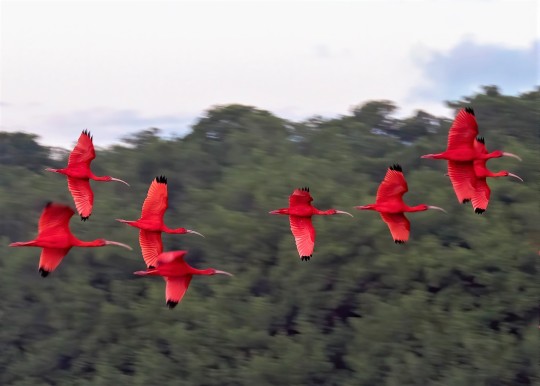
(Amazing photography by Cloudtail (above:CC BY-NC-ND 2.0(cropped)) and Doug Greenberg (below:CC BY-NC 2.0))
The Scarlet Ibis
Scientific Name: Eudocimus ruber
Region: Scattered tropical and sub-tropical areas along the coasts of South America up through the parts of the Caribbean
Size: About 22" (56cm) tall at the shoulder and 26"–41" (66cm–105cm) long from head to tail, with a 16"–22" (40cm–57 cm) long tail
Interesting Notes: Where other species of ibis are white, olive, brown and black, the Scarlet Ibis is (obviously) a bizarrely bright red. Similar to their cousin, the flamingo, their unique coloration is caused by the carotene in the bright red crustaceans they eat. However, here in Florida, people will occasionally catch glimpses of a "pink ibis" - which is not a true separate species, but rather a hybridization caused by the scarlet ibis interbreeding with the nearly anatomically identical American white ibis.
#Scarlet Ibis#Eudocimus ruber#creatureawaits#red birds#bright red birds#red ibis#pink ibis#ibises#bright red animals#wading birds#tropical birds#South American birds#Caribbean Birds
1 note
·
View note
Text
#ToucanTuesday:
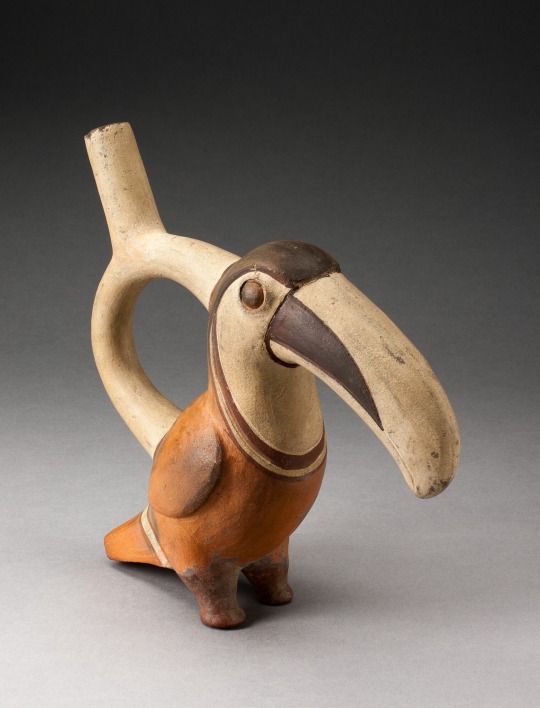
Handle Spout Vessel in Form of a Toucan
Moche culture, North Coast Peru, 100 BCE–500 CE
Ceramic & pigment
22.9 × 17.2 cm (9 × 6 3/4 in.)
The Art Institute of Chicago 1957.406
#animals in art#birds in art#bird#toucan#Moche art#Peruvian art#South American art#indigenous art#pre conquest art#sculpture#ceramics#pottery#polychrome#effigy vessel#Att Institute of Chicago#Toucan Tuesday
467 notes
·
View notes
Photo

Groove-Billed Ani (Crotophaga sulcirostris)
Family: Cuckoo Family (Cuculidae)
IUCN Conservation Status: Least Concerned
While many species of cuckoos are brood parasites that trick other birds into incubating their eggs and raising their young, the 3 species of large-billed, black-feathered cuckoos in the genus Crotophaga, known collectively as Anis, are not, and the Groove-Billed Ani (notable for being possibly the most common Ani species) is no exception: every Groove-Billed Ani lives in a small social group consisting of 4-10 individuals, with the number of individuals in a group always being even. This even numbering is the result of the way the flock is organised, as each flock is made up of 2-5 pairs of mates, and while each individual will only breed with their mate all individuals in the group work to establish and defend a shared territory and to construct a large, cup-shaped shared nest into which every female in the flock will lay eggs. Found in grasslands, shrublands and other open habitats, the Grooved-Billed Ani is native to much of northern South America and southern North America (although on occasion it may be observed as far south as northern Argentina and as far north as Canada as a vagrant) and feeds on fruits, seeds, insects and small vertebrates, with its large and extremely powerful beak being well suited to breaking hard seed shells as well as the exoskeletons and bones of prey. Throughout the majority of its range this species is resident (non-migratory), but in the northernmost extremes of its North American range it may seasonally travel south to avoid cold weather and low resource availability during the winter.
--------------------------------------------------------------------------
Image Source: https://www.inaturalist.org/taxa/1972-Crotophaga-sulcirostris
#Groove-Billed Ani#ani#anis#cuckoo#cuckoos#bird#birds#zoology#biology#ornithology#animal#animals#wildlife#South American wildlife#North American wildlife
932 notes
·
View notes
Photo

South American Painted-snipe
1K notes
·
View notes
Text

Royal Flycatcher
167 notes
·
View notes
Text

Crimson rumped toucanet (Aulacorhynchus haematopygus)
Photo by Tui De Roy
#Aulacorhynchus haematopygus#Aulacorhynchus#crimson rumped toucanet#green#green bird#birds#tropical birds#south american birds#animals#wildlife#nature
14 notes
·
View notes
Text
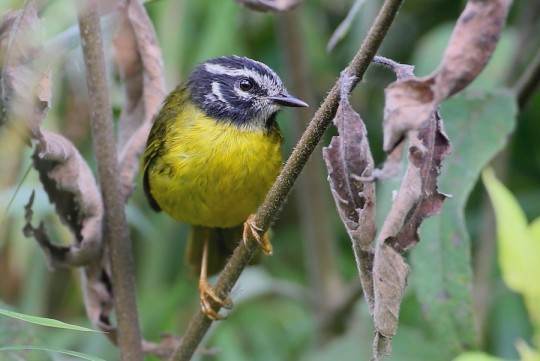
Santa Marta Warbler (Janos Olah)
47 notes
·
View notes
Text

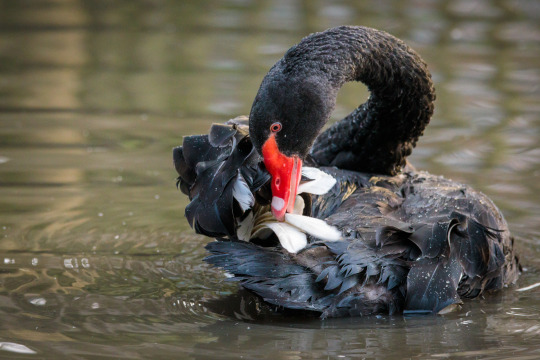


#BestZoo#Photography#Photo#Zoophotography#zoo#animal#animals#animalphotography#nasua#South#American#Coati#nasuas#coaties#Bird#Birds
10 notes
·
View notes
Photo
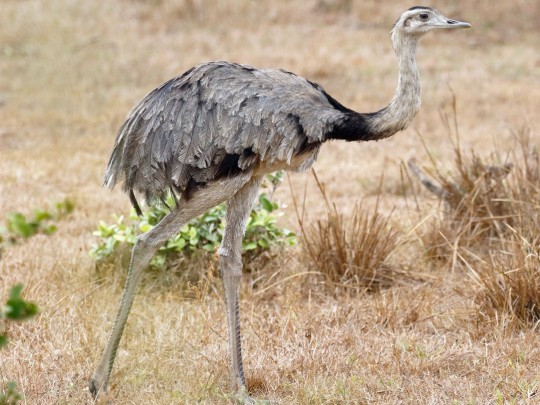


Renowned Rheas
A distant cousin to the ostrich and the emu, rheas or ñandus are a group of birds belonging to the genus Rhea, consisting of the common rhea ( Rhea americana) and the lesser rhea (Rhea pennata). Also included as either a subspecies or a seperate species is the puna rhea ( Rhea tarapacensis). This group is found in the southern half of South America, typically in open grasslands or sparse woodlands.
Like their flightless relatives, rheas are large, flightless birds characterised by a small head, long neck, and long legs. Adults of the common rhea species can reach up to 1.5 m (4 ft 11 in) tall and 27 kg (60 lbs), while the smaller species only reach 1 m (39 in) and 29 kg (63 lbs). All members of the rhea group have dull grey or brown coloration. Males are typically larger than females, although both possess large clawed feet which are used for outrunning or out-kicking predators like cougars (Puma concolor) and pampas cats ((Leopardus colocolo), which often go after nests or chicks.
Rheas are largely herbivorous, and spend most of their days grazing. Their diets consist of grass, cacti, saltbrush, and the occasional small lizard or insect. Outside the breeding season they can be found in flocks of 10-100, with individuals taking turns watching for potential threats while the others graze. During the breeding season, from July to January, males fight each other with their sharp claws and beaks to gain dominance. The victor mates with up to 12 females, each of which produces a clutch of 20-40 eggs each season.
Once the eggs are laid, the males provide all the care for the offspring. These eggs are laid once every 48 hours, and most are moved to a nest for protection. However, some eggs are left to rot, and the flies they attract serve as food for the brooding males and their chicks. Eggs take about 30 days to hatch, and the young are taken are of for an additional six months. Rhea fathers are extremely territorial, and will become aggressive even towards other females, all while guarding several broods of chicks. Once they reach independence at six months old, chicks join a group of young adults, though they don’t become sexually mature until they’re about two years old. In captivity individuals can live up to 13 years.
Conservation status: The greater rhea is considered Near Threatened by the IUCN, while the lesser rhea is classified as Least Concern. Their main threats are habitat destruction and increased hunting and nest poaching from humans.
If you like what I do, consider leaving a tip or buying me a ko-fi!
Photos
Dave Curtis via eBird
Konrad Wothe
Mehgan Murphy
#greater rhea#lesser rhea#Rheiformes#Rheidae#ñandús#South American ostriches#rheas#paleognaths#birds#grasslands#grassland birds#scrubland#scrubland birds#deciduous forests#deciduous forest birds#south america#southern south america#biology#zoology#animal facts
114 notes
·
View notes
Text
It's been a minute, but back to Daemon AU! Here are my original thoughts on Frenchie:
Frenchie - Honestly I think funniest universe is if he has a fox or something that acts super like a cat but not quite. Definitely something duplicitous but in a… friendlier (?) way than I’m going with Edward? Not really attached to any ideas yet.
@k-mund made a fun suggestion of a mimicking bird like a common starling, for music reasons + con artist reasons + fear of cats reasons, all of which were cool
I did end up getting pulled away from starlings specifically, but I have several cool bird options:
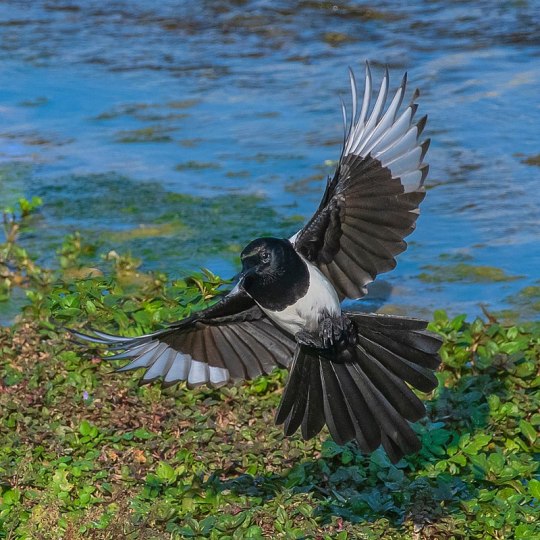
Option 1 - Eurasian Magpie. 20-24" Wingspan. Native to Europe. Magpies are corvids, and this particular species is one of the most intelligent animals, period. They've historically been associated with superstition and trickery, especially notable for the English "one for sorrow" rhyme, and an eye for shiny objects. Not super known for mimicry but, like most corvids, capable of it.
Note: I do tend to consider native habitat as a factor, because I feel like people's daemons should typically settle as something "native" to them. Of course, Frenchie doesn't have a canon place of origin, and between being mixed race and formerly "in the service" there's a lot of potential baggage there in multiple directions.

Option 2 - Western Jackdaw. 27" Wingspan. Native to Europe. Another corvid, with intelligence, social / talkative nature, urban adaptability, and enough mimicry skill that they can be trained to mimic human speech. Apparently they do a really notable amount of social food sharing, where they offer food to others (not just mates and young) and are more likely to offer more desirable foods. In folklore they get associated with fools, narcissism, and greed, and culturally corvids tend to get treated as pests.
I do have a fondness for them because Edward Kenway's pirate ship in Assassin's Creed Black Flag was called the Jackdaw, since he was Welsh and the Welsh associate them with churches. Not necessarily a point for Frenchie, but they are cool.
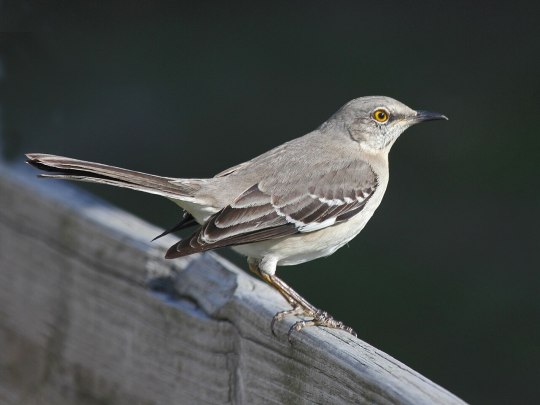
Option 3 - Northern Mockingbird. 12-15" Wingspan. Native to Central & North America (+ the Caribbean). The mimicking bird of North America, known for an extensive repertoire of songs that trick humans. They are intelligent enough to remember specific humans and very urban adaptable. Strong cultural association with music (and also the Hunger Games lol). They also frequently raise their wings up while on the ground to show off white patches - unclear why. Not sure I'm as inclined to this one over a corvid just because they lack a lot of the superstition elements, but I'm still considering.
I've also done some research into corvids native to the Caribbean - namely the White-Necked Crow or the Jamaican Crow - who apparently babble a lot and can even sound kind of like parrots, but I'm not sure I've yet seen any compelling reason to go with either of them unless I decide I don't want a European corvid specifically.
#our flag means death#ofmd daemon au#frenchie ofmd#birds#ladyluscinia#the 'native' note is very broad. like stede won't ever have seen a real version of his south american moth#but also i doubt anyone in 1700s caribbean has a kangaroo no matter how perfect it might be#because their souls - and minds - have no fucking idea that is an animal that exists 😆
10 notes
·
View notes
Text
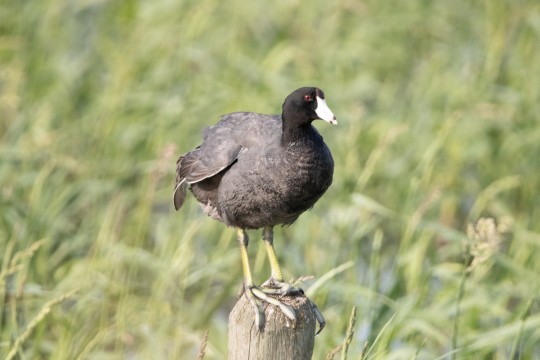
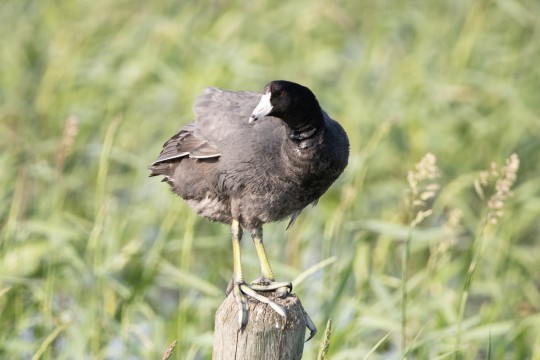
American Coot.
I love these weird little birds.
#I was so used to seeing them down south that it threw me the first time I saw one in Yellowknife#american coot#birds
17 notes
·
View notes
